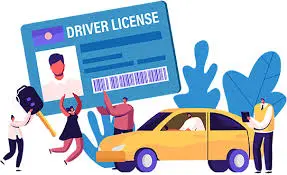Driving and Licensing, Driving is a responsibility that requires not only skill and awareness but also adherence to legal regulations. Proper licensing ensures that drivers meet the standards necessary for safe and legal operation of a vehicle. Whether you’re a new driver, a seasoned motorist, or someone looking to understand more about driving regulations, this blog post provides a comprehensive overview of driving and licensing.
The Importance of Driving and Licensing
Driving and licensing are closely linked to road safety and legal compliance. A valid driving license confirms that a driver has met the necessary qualifications to operate a vehicle safely. Licensing helps to:
- Ensure Safety: By requiring drivers to pass tests and meet specific standards, licensing reduces the risk of accidents.
- Promote Responsibility: A driving license signifies that the driver understands and adheres to road rules and regulations.
- Facilitate Legal Driving: Proper licensing is required to legally operate a vehicle and avoid legal consequences.
The Process of Obtaining a Driving License
1. Understand Licensing Requirements
Before applying for a driving license, familiarize yourself with the requirements in your region. These typically include:
- Age: Minimum age requirements vary, but many regions require drivers to be at least 16 or 18 years old.
- Residency: Most areas require applicants to be residents of the jurisdiction where they are applying.
- Health Standards: Some regions require medical examinations to ensure drivers are physically fit to drive.
2. Complete Driver’s Education
In many places, completing a driver’s education program is a prerequisite for obtaining a driving license. These programs often include:
- Classroom Instruction: Learning about traffic laws, road signs, and safe driving practices.
- Behind-the-Wheel Training: Practical driving experience under the supervision of a licensed instructor.
3. Pass the Required Tests
To obtain a driving license, you will typically need to pass several tests:
- Written Knowledge Test: Covers traffic laws, road signs, and safe driving practices.
- Vision Test: Ensures that you meet the visual standards required for safe driving.
- Practical Driving Test: Assesses your ability to operate a vehicle safely and follow road rules.
4. Submit Required Documents
When applying for a driving license, you will need to provide:
- Proof of Identity: Valid identification, such as a passport or birth certificate.
- Proof of Residency: Documents showing your address, like a utility bill or lease agreement.
- Proof of Driver’s Education: Completion certificates or proof of driving training, if applicable.
Renewing Your Driving License
Driving licenses typically have an expiration date, and it’s essential to renew them before they expire to avoid legal issues. The renewal process generally includes:
- Updating Information: Ensuring that your address and other personal details are current.
- Paying the Renewal Fee: Fees vary based on the type of license and the renewal period.
- Passing a Vision Test: Some regions require a vision test during renewal to ensure continued fitness to drive.
International Driving Permits (IDP)
If you plan to drive abroad, obtaining an International Driving Permit (IDP) can be crucial. An IDP translates your driving credentials into multiple languages and is recognized in many countries. To obtain an IDP:
- Apply Through a Recognized Organization: In many countries, including Canada, the IDP is issued by automobile associations like the Canadian Automobile Association (CAA).
- Provide Required Documents: Typically, you need a valid domestic driving license, passport-sized photos, and a completed application form.
Tips for Responsible Driving
- Stay Informed: Regularly review and stay updated on local traffic laws and regulations.
- Practice Safe Driving: Always adhere to speed limits, avoid distractions, and never drive under the influence of alcohol or drugs.
- Maintain Your Vehicle: Regularly service your vehicle to ensure it is in good working condition and meets safety standards.
Conclusion
Driving and licensing are integral parts of ensuring road safety and legal compliance. By understanding the requirements and processes involved, you can navigate the path to obtaining and maintaining your driving license with confidence. Whether you’re applying for your first license, renewing an existing one, or preparing to drive internationally, staying informed and adhering to regulations helps promote safer roads for everyone.
Drive safely and responsibly, and ensure that your driving credentials are always up-to-date
Read More:
